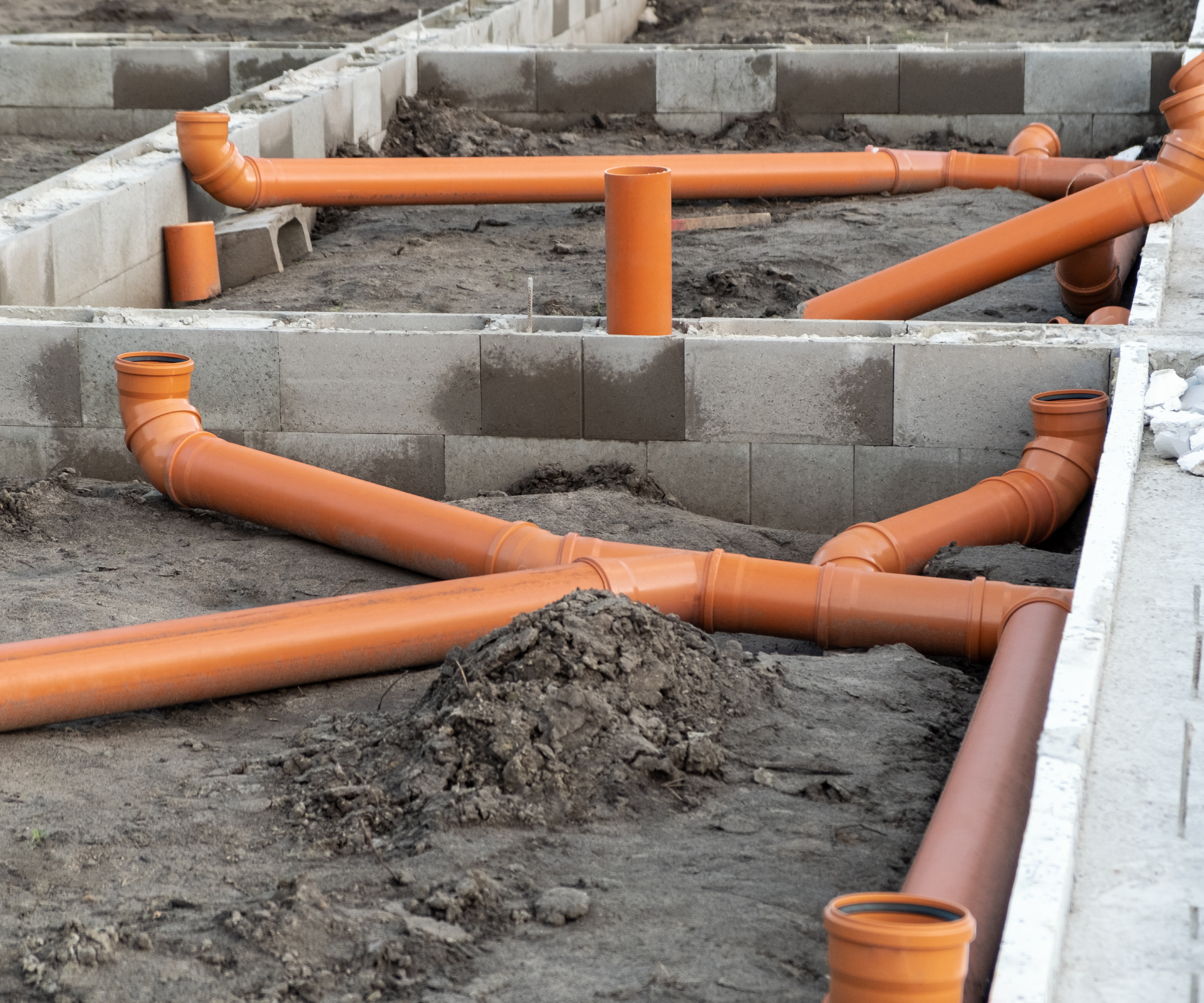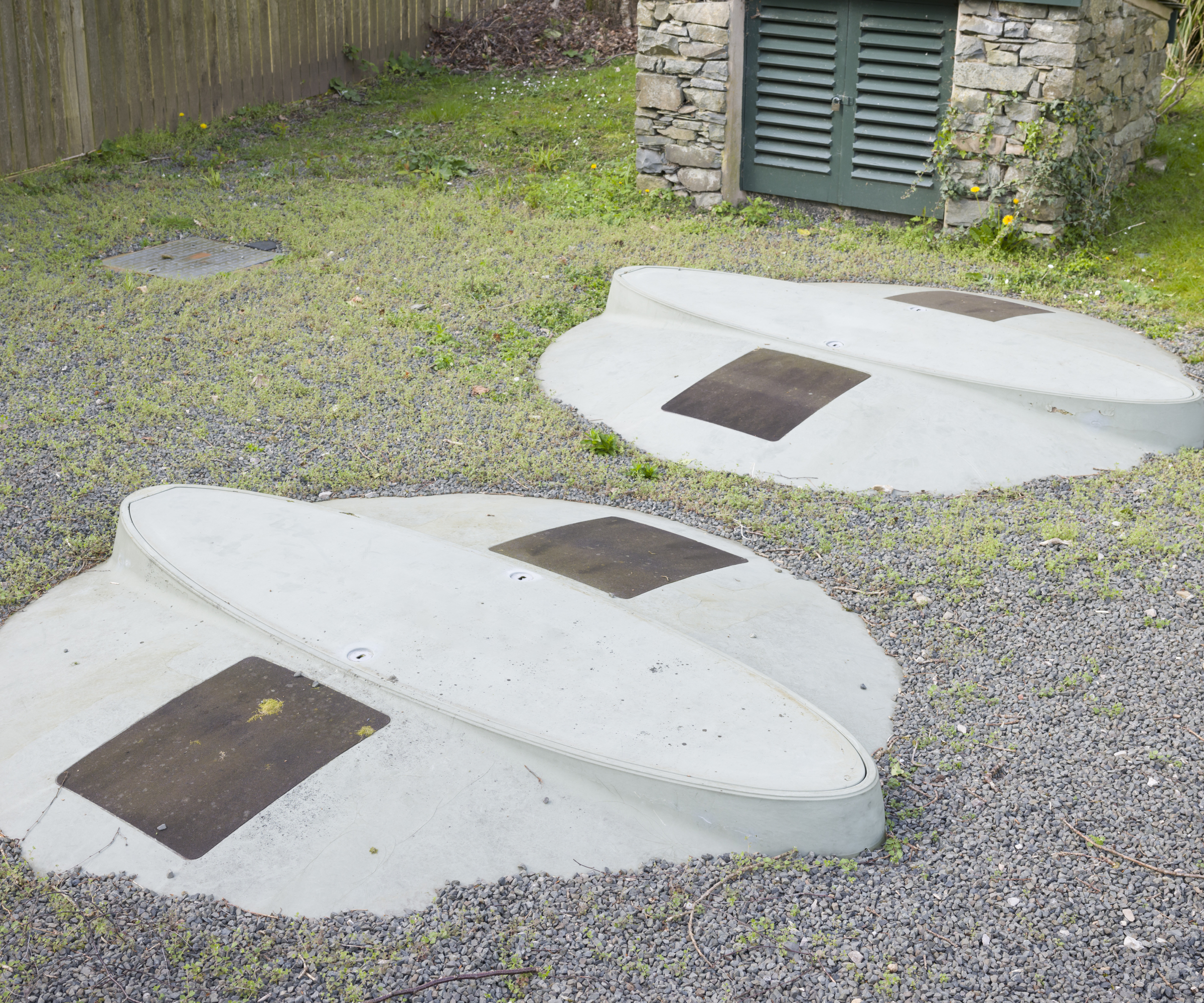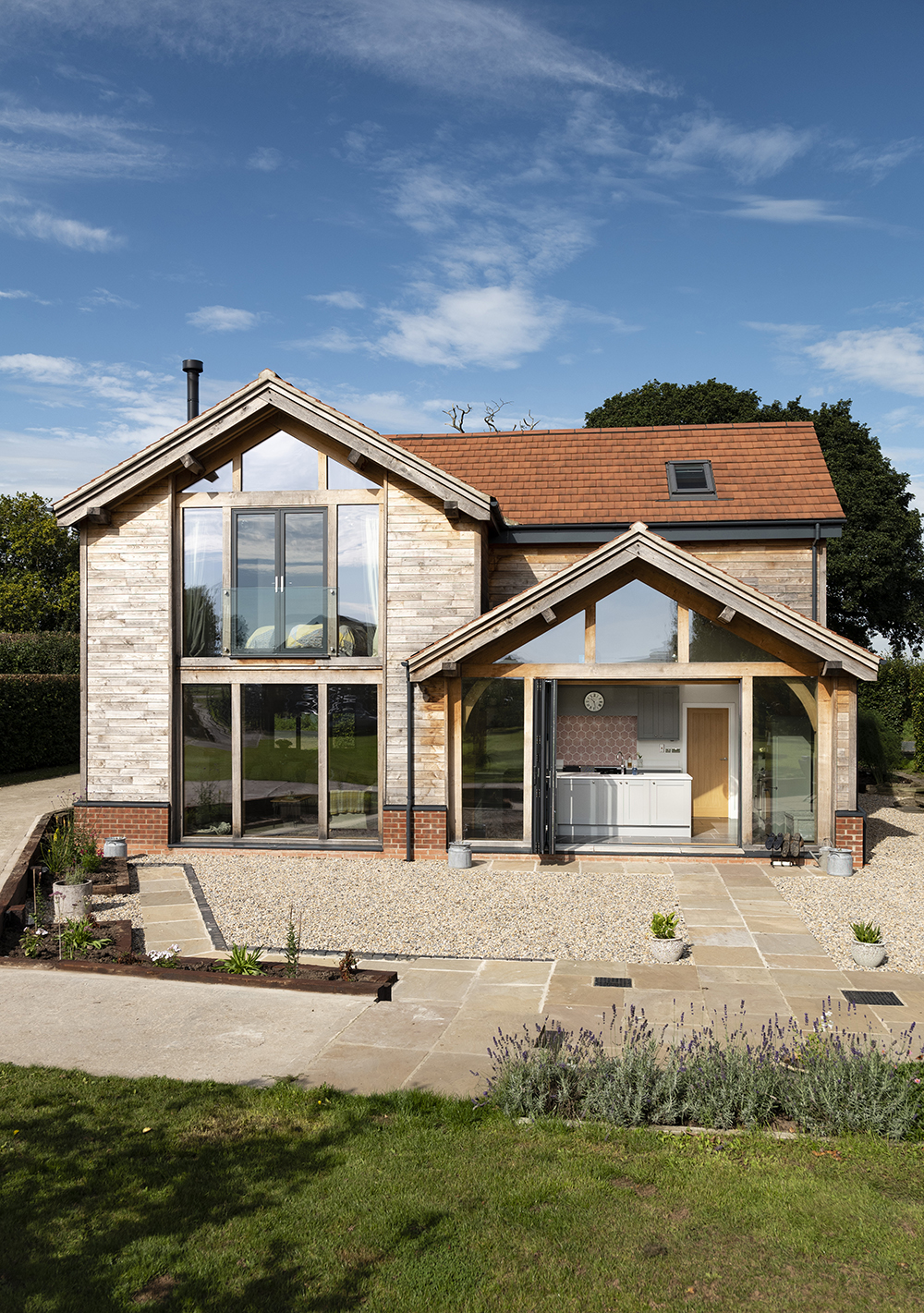What drainage systems do you need for your project?
While it's not the most exciting part, getting your drainage systems right is essential. We explore the pros and cons of mains vs off mains drainage

While a large part of the drainage systems you put in place for your self build will hopefully never be seen again, choosing the right type at the start is key. It's one of the early decisions you will need to make, but one that can have costly and timely repercussions down the line if you get it wrong.
In general, you'll be choosing between mains drainage vs off mains drainage systems, both of which will be subject to a range of rules and regulations guiding you towards the right choice.
In this expert guide, author and experienced builder, Mark Brinkley, takes you through everything you need to know including how drainage systems work, the pros and cons of each type and the pitfalls you need to keep an eye out for.
How do drainage systems work?
Inside a house, there is a web of small waste pipes running from sinks, basins, showers and toilets. These all feed into a soil stack, which drops down into an underground pipe, which then, in theory, falls gently away from the house towards public sewers or an on-site tank, depending on whether you are installing mains drainage or off mains drainage.
Above-ground waste pipes, routinely referred to as soil and vent systems, are usually installed by a plumber. The soil stack can be either internal or external and there may be more than one. Critically, they have to have some way of venting above roof level, in order to let any bad odours escape from the house. Each waste pipe feeding into the soil stack also has to have a trap built into it, usually a U-bend or an S-bend, which is designed to stop drain odours leaking out into the home.
Below ground, the pipes are referred to as drainage and are normally installed by the groundworkers who build the foundations of a house. Generally speaking, if your site is close to an existing mains drainage, and access is straightforward, it makes really good sense to feed your waste into it. It is usually a cheaper solution than specifying on-site drainage, which is the alternative. Sometimes you need to carry out investigations to determine what your best option is.

Mains drainage vs off mains drainage
Your local water company will hold maps of drainage runs, which will show the depth of the drains. These maps aren’t always completely accurate but they usually give a good indication of the state of play. The main drains are usually run under the street and connections to them often involve digging roadworks to gain access, the kind of event that requires traffic control and the like. Such works are expensive but, in the great scheme of things, they are still usually cheaper than the alternatives.
Bring your dream home to life with expert advice, how to guides and design inspiration. Sign up for our newsletter and get two free tickets to a Homebuilding & Renovating Show near you.
It is possible that you will have access to shared drains that collect foul waste from a group of homes before entering the main or public sewers in the road. This is typical on housing estates and for terraced homes. Finding out where these drains run can be a complicated undertaking and you may have to organise drainage surveys and enlist the help of a drainage contractor with camera equipment to help build up your own map.
Alternatively, you might have to put in a long drain run across land you don’t own. In such a situation, you have to have permission from the owners and there may be a fee attached, and a hefty fee at that. Once the likely connection costs run over £15,000, it is time to start looking at on-site, or off mains drainage options.
"Most people consider installing on-site drainage when the new structure is far away (roughly more than 30 metres away) from the mains system," confirms Checkatrade member and owner of AW Plumbing & Heating, Aaron Willcox.
"The distance makes connection costs far more expensive, meaning that despite the initial high cost of installation, an on-site system may be cheaper in the long run. Other factors to consider include whether a mains connection requires excavation costs, and whether there are any obstructions (trees, roads, etc.) in the way."


Aaron Willcox is an independent, fully qualified and fully insured plumbing and heating engineer operating in and around the Kent area , offering a wide range of services, competitive rates and 24/7 emergency call outs.
Do you need permission to connect to mains drainage?
Normally a district’s water company will be responsible for its drains, but in any case, this is the kind of information that routinely turns up on a legal search when a property or plot changes hands and it is never usually hard to find out. Whatever company has responsibility, they will be who you pay your water and sewage bills to.
Their permission will have to be sought if you wish to make a drain connection and they will likely charge a considerable fee giving it, but they are unlikely to carry out this work themselves.
As long as you are working with gravity, then there is nothing, in theory, to stop you running a 100mm foul waste pipe (the conventional diameter) as far as you want. Foul drains should be run at small fall: between 1 in 40 and 1 in 110. If the pipe is much steeper than this, solids in the waste will become separated from the liquids and the pipe will require frequent rodding to stop it getting blocked.
If the fall is steeper than 1 in 110, then you have to introduce an inspection cover for access at a point with a sudden drop of a metre or more.
Of course there is a cost to laying conventional drains as they have to be excavated, laid in pea shingle, and have access points. At distances of more than 50m, as well as road opening fees, the overall cost starts to become prohibitive, and on-site drainage becomes a viable option.

Adding a macerator pump
However, having to work 'against gravity' introduces another complexity to your drainage systems, and "if the property sits below the level of the main sewer, a gravity feed is not possible - this means that a macerator pump may be required," explains Aaron Willcox.
A tank with macerator pump, which is often referred to as a lifting station, collects the foul waste from your house and then pumps the waste through a small bore pipe up the slope and into mains drainage. This is also an option on very long drain runs where the cost of excavation rises becomes exorbitant.
What are on-site drainage systems?
As previously discussed, if connecting to mains drainage isn't an option, you can run your foul waste to an off mains drainage solution.
This is a very common method of disposing of waste in rural locations where mains drainage is not present. However, you do need land and you do need permission. The Environment Agency (or SEPA in Scotland) require you to register with them should you want to dispose of sewage on-site.
"The main types of on-site drainage are a septic tank, where waste is broken down by bacteria, a sewage treatment plant, which is more advanced and uses mechanics to promote bacterial growth, and a cesspool, which contains waste but must be emptied regularly," explains Aaron. Other options include drainage fields and reed beds.
If yours is a new installation, it will be subject to planning permission and building control approved document H and you will be expected to install a sewage treatment plant or something of equivalent standard.
If however, you are inheriting an on-site drainage solution, you may be required to upgrade your installation as certain designs, specifically septic tanks discharging into water courses, are no longer permitted.

Disposing of surface water
Wherever possible, rainwater must be disposed off separately to foul water. This is because foul water systems are easily overloaded by the addition of rainwater, especially during heavy storms, and this can lead to the release of untreated sewage into our rivers.
As rainwater doesn’t require any treatment, it can be disposed of in an underground soakaway or, failing that, into a nearby water course. Some streets have storm drains, separate from the sewers, and these may be an acceptable destination for your unwanted rainwater.
Soakaways used to be very simple affairs, often no more than a metre-deep hole in the ground filled with brick rubble and covered over with a paving slab and some topsoil. However, as part of the guidelines regarding sustainable drainage systems (SuDs), you will be required to undertake an assessment of how much rainfall will be running off your roof and your paved areas so that you can ensure there is an adequate volume of covered space to deal with the very worst storm without flooding.
You may also be required to install permeable paving on your driveway to stop flash flooding. These requirements are likely to form part of a planning permission for a new home.

FAQs
Should I include rainwater harvesting in my plans?
Instead of relying on a soakaway as your primary means of dealing with rainwater, you can put it to work by running it into an underground tank for use around your house and grounds. This is called rainwater harvesting.
In some ways similar to on-site treatment plants, rainwater harvesting requires a filter, a pump, and an overflow to a soakaway. In parts of the world where there is no mains water supply, all domestic water is harvested from rainfall, but this requires additional on-site treatment to be potable. In the UK, harvested rainwater is usually used for toilets, dishwashers, washing machines, and watering the garden.
Is it really important to get a good idea of drainage costs from the outset if you don't want any nasty surprises. The costs for on-site drainage will also include ongoing costs to running an on-site solution, such as tank emptying, and treatment plants typically require an electricity connection, though this is not the case for all models.
Make sure you also plan out your driveway drainage correctly to avoid flooding and ensure your garden drainage is in place when you complete your landscaping designs.
Mark is the author of the ever-popular Housebuilder’s Bible and an experienced builder. The Housebuilder’s Bible is the go-to hardback for self builders; originally published in 1994, it is updated every two years with up-to-date build costs and information on planning and building regulations, and is currently in its 14th reiteration.
He has written for publications such as Homebuilding & Renovating for over three decades. An experienced self builder, his latest self build, a contemporary eco home built to Passivhaus principles, was created on a tight urban brownfield plot.

